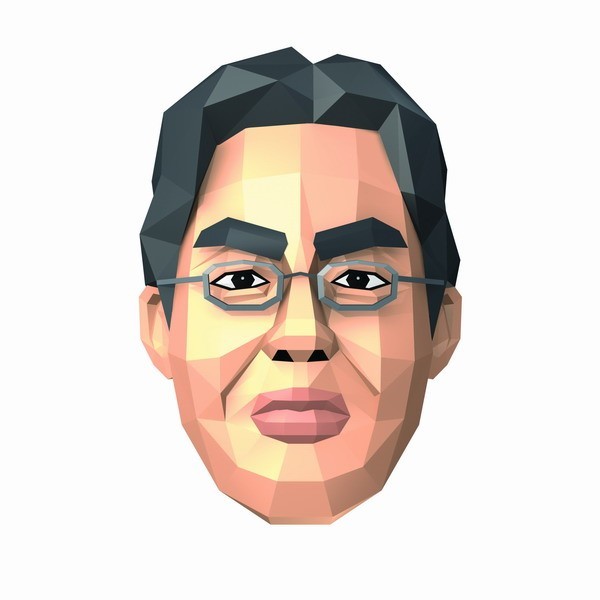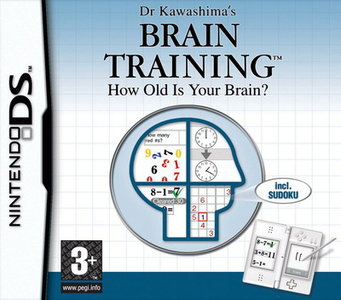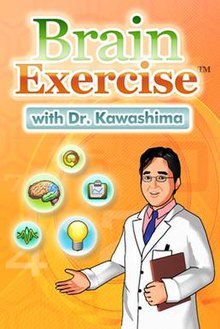Chad Kawashima Dr. Chad Kawashima was born and raised on Oahu. He received his dental education in San Francisco at the University of the Pacific, one of the leading dental schools in the country for clinical dentists. From an early age he knew he wanted to become a dentist. Kawashima is by far the gentlest and most knowledgeable dentist I've ever met, and I have high standards. ” in 14 reviews “ I also referred my boyfriend here and I got a $25 referral credit and of course, my bf got his $25 credit for his initial exam!
Kapoor’s lab studies the molecular mechanisms required for accurate propagation of genetic material during cell division, with the goal of developing new therapies to treat cancer. Research in the lab has two areas of focus: discovering and developing new tools to probe protein function, and using them to dissect dynamic cellular processes such as cytoskeleton organization and cell division.
Ryuta Kawashima, I study the sience of a brain of a Top Japanese University. I am here to help you train your brain. People have trouble concentratin. Potent, reversible, and specific chemical inhibitors of eukaryotic ribosome biogenesis. Cell 167, 512–524 (2016). Mario is the persona Mario assumes in the Dr. Under this identity, Mario dons a lab coat, a head mirror, and a stethoscope around his neck. Debuting in his eponymous game, Dr. Mario and his assistant Nurse Toadstool work at the Mushroom Kingdom Hospital, where he eliminates viruses.
To study a dynamic cellular process—such as the preparations for division—scientists often need to disrupt the function of key proteins involved in it. The Kapoor lab develops chemistry-based tools and methods to study these dynamic processes, and much of their effort focuses on drug-like small-molecule inhibitors. They use these compounds to dissect the processes required for the accurate propagation of the genome to daughter cells during division, proper assembly of the cytoskeleton, and to develop new cancer therapies.
Using multidisciplinary approaches, the lab has identified chemical inhibitors for members of a family of enzymes called ATPases, with a special focus on those required for cell division (kinesin-5, cytoplasmic dynein, Polo-like kinase, and spastin). These inhibitors are now widely used as probes of cellular mechanisms and of protein activity and shape, and they have aided the development of drugs that have entered clinical trials. Recent work in Kapoor’s lab focuses on identifying compounds that inhibit the SARS-CoV-2 helicase, an ATPase required for viral replication.
Dr. Kawashima Dentist

In parallel, Kapoor’s group has devised approaches to determine the mechanism by which a compound achieves its effect, with the goal of better anticipating and overcoming drug resistance. One of these approaches, called DrugTragetSeqR, uses high-throughput sequencing to identify mutations in cancer cells that can confer resistance to a compound of interest. The other approach involves testing the effects of inhibitors on proteins engineered with mutations, in order to determine the mechanism by which a compound achieves its effect—knowledge that can guide chemical modifications of the compound to increase potency and specificity and also help address resistance. The lab used this strategy to design spastazoline, a first-in-class chemical inhibitor of the protein spastin, which severs cellular structures called microtubules.
The Kapoor lab uses these tools and approaches to dissect biological mechanisms, with a major focus on the assembly and function of microtubule-based structures critical for cell division. For instance, the lab has shown how two proteins, PRC1 and kinesin-4, mark the plus ends of microtubules with tags proportional to the length of the microtubules. These tags may help the cell select and organize microtubules into structures called anaphase spindles, which help segregate chromosomes and position the site of cell cleavage. The lab also used chemical inhibitors to reversibly “trap” living cells at different intermediate stages of division and dissect how errors in chromosome-spindle attachment arise, are detected, and then corrected. In textbook models, chromosomes become aligned at a position known as the metaphase plate after each chromosome attaches to the opposite ends of the spindle (a phenomenon called bi-orientation). The lab’s work overturned this dogma by providing direct evidence that aligned chromosomes provide tracks along which unaligned chromosomes can be transported to the proper position. Most recently, the lab has determined the structure of the γ-tubulin ring complex, an essential regulator of microtubule formation. The lab’s findings may facilitate the development of new cancer therapeutic strategies that target cell division and microtubules.
Kapoor is a faculty member in the David Rockefeller Graduate Program, the Tri-Institutional M.D.-Ph.D. Program, and the Tri-Institutional Ph.D. Program in Chemical Biology.
| Born | May 23, 1959 (age 61) Chiba City, Chiba Prefecture, Japan |
|---|---|
| Nationality | Japanese |
| Alma mater | Tohoku University |
| Known for | Portraying Dr. Kawashima in the Brain Age series of video games |
| Scientific career | |
| Fields | Neuroscience |
| Signature | |


Ryuta Kawashima (川島 隆太, Kawashima Ryūta, born May 23, 1959) is a Japanese neuroscientist known for his appearances in the Brain Age series of video games for the Nintendo DS, Nintendo 3DS and Nintendo Switch .[1]
Biography[edit]
Kawashima was born May 23, 1959 in Chiba City, Chiba Prefecture, Japan. In the 1970s, he enrolled in Tohoku University. After graduating with an M.D. at the school of medicine, he emigrated to Sweden to become a guest researcher at the Karolinska Institute. He moved back to Tohoku and is now a resident Professor with tenure. He is famous in Japan and is a former member of Japan's National Council, concerning Language and Culture.
Career[edit]

One of his primary research topics is mapping the regions of the brain to faculties such as emotion, language, memorization, and cognition. Kawashima is trained in neurophysiology and is an expert on brain imaging. His other primary topic involves applying this information to aid children to develop, aging people to retain, and patients to recover their learning facilities.[2] As mentioned earlier, he is the host of the famous Brain Training game series (more commonly known as Brain Age). He received a lot of attention from the media when he refused a 15 million euro salary (about 21 million dollars) from the game company. According to Kawashima, one should only get this amount of money when one has worked for it. He finally accepted a salary of 70000 euros a year; the rest of the money he would use to fund his research.
Publications and releases[edit]
In 2001, Ryuta Kawashima conducted a study at Tohoku University in Japan, claiming that frontal lobes are not stimulated during video game playing sessions. However scientists widely dismissed his study after he claimed that the lack of stimulation could potentially stunt brain development and negatively affect people's ability to control their behaviour. Kawashima found no direct evidence for permanent brain damage.[3]
In 2003, Kawashima authored Train Your Brain: 60 Days to a Better Brain, which was a great success in Japan. When released worldwide, it sold more than 2.5 million copies. A handheld stand-alone unit, Brain Trainer, was later developed, and became Brain Age: Train Your Brain in Minutes a Day! for the Nintendo DS, released in May 2005. A sequel, Brain Age 2: More Training in Minutes a Day! was released in December 2005. Both games were a critical and commercial success, selling 19.01 and 14.96 million units worldwide, respectively, making them one of the best-selling Nintendo DS video games. He later participated in the development of two more games for the Nintendo DSi's DSiWare service, both of which taking some puzzles from the previous Brain Age titles while featuring new puzzles as well. Rather than accept them for himself, he has used the royalties from the game (estimated in 2.4 billion yen) to build two laboratories.
In 2007, an English-language version of Train Your Brain: 60 Days to a Better Brain was published by Penguin Books. It was followed by a sequel, Train Your Brain More: 60 Days to an Even Better Brain, published in 2008.
In June 2009, Namco Bandai released another video game featuring Kawashima entitled Brain Exercise with Dr. Kawashima for the iPhone OS platform.
Also in June 2009, German developers Chimera Entertainment and BBG Entertainment released Train your Brain with Dr. Kawashima for PC and Mac.
Dr Kawashima

In February 2011, Dr. Kawashima released the video game Body and Brain Connection for Microsoft's Kinect peripheral on Xbox 360.
In 2012, a third game in the Brain Age series, Brain Age: Concentration Training was released for Nintendo 3DS.
In 2014, Super Smash Bros. for Nintendo 3DS and Wii U was released and included a summonable 'Assist Trophy' based on Dr. Kawashima's appearances in the Brain Age series. He reappears in 2018's Super Smash Bros. Ultimate.
Dr Kawashima Switch
On December 21, 2016, a Super Mario Maker Event Course titled Dr. Kawashima's Athletic Training was released, along with a Mystery Mushroom costume of Dr. Kawashima, unlocked by completing the Event Course.
Dr Kawashima's Brain Training for Nintendo Switch was released on the Nintendo Switch on December 27, 2019 in Japan and January 3rd, 2020 in Europe.
See also[edit]
References[edit]
Dr Kawashima Calcul Game
- ^Touch! Generations ProfileArchived 2007-09-27 at the Wayback Machine
- ^Kawashima, Ryuta. 'Functional Brain Imaging, New Industry Hatchery Center'. Tohoku University School of Medicine. Archived from the original on 2008-01-03. Retrieved 2009-10-08.CS1 maint: discouraged parameter (link)
- ^'Video game 'brain damage' claim criticised'. New Scientist. 2002-07-11. Retrieved 2008-09-30.CS1 maint: discouraged parameter (link)
Dr Kawashima Nsp
